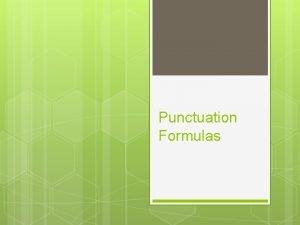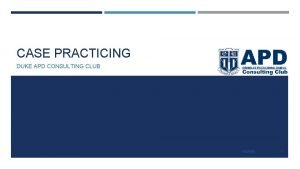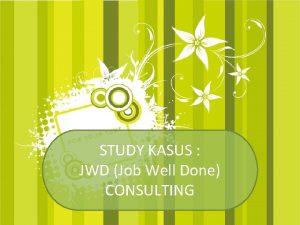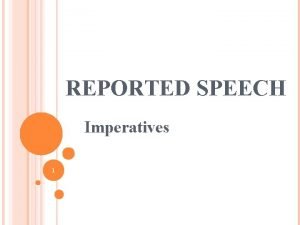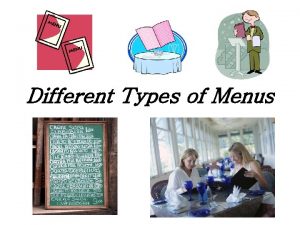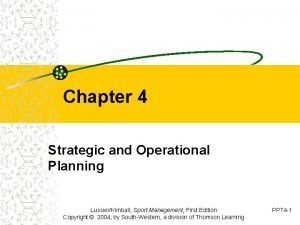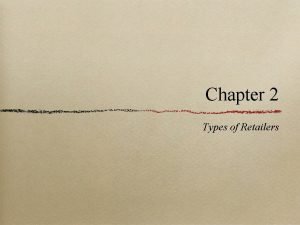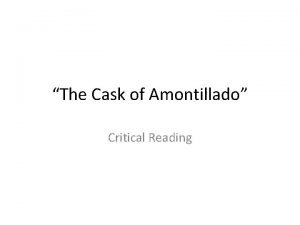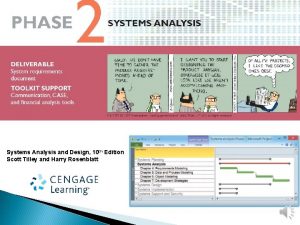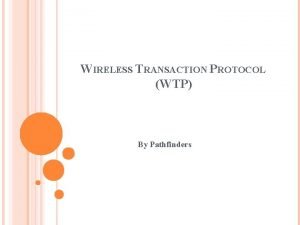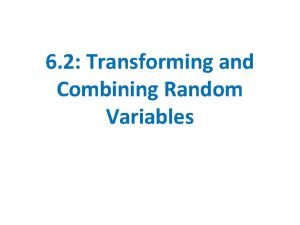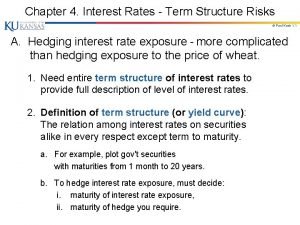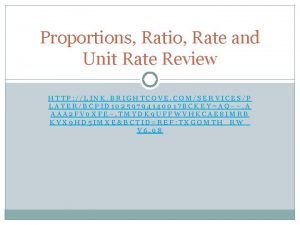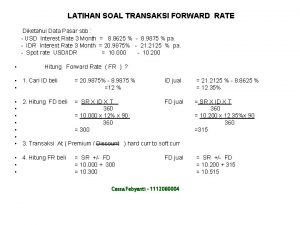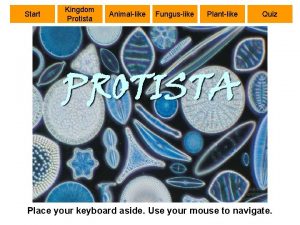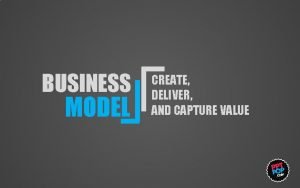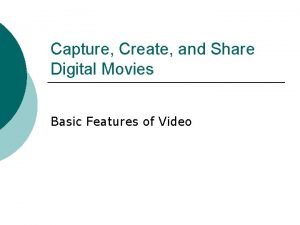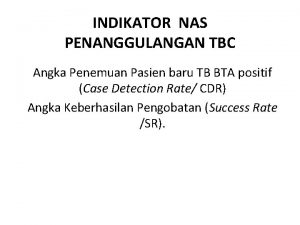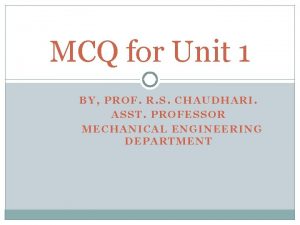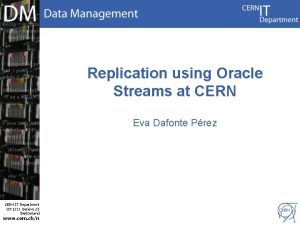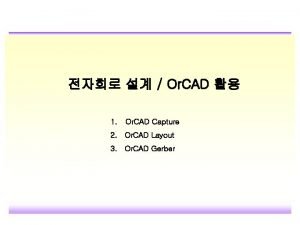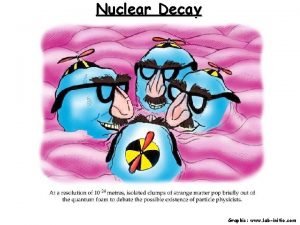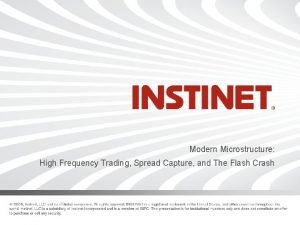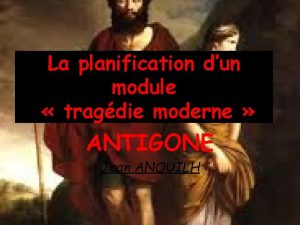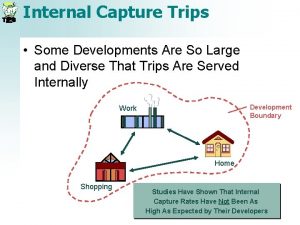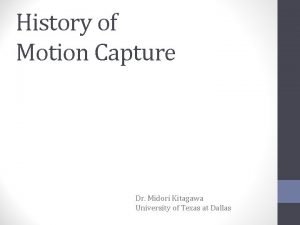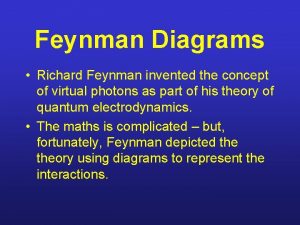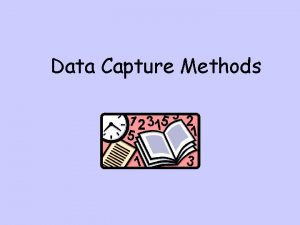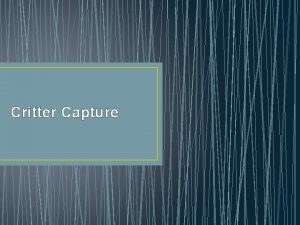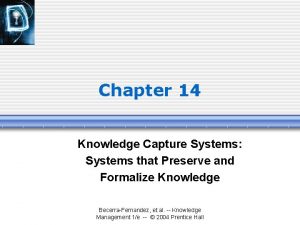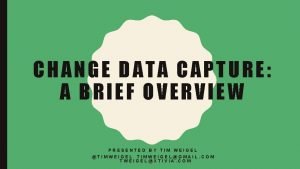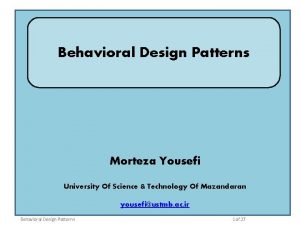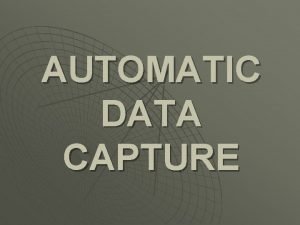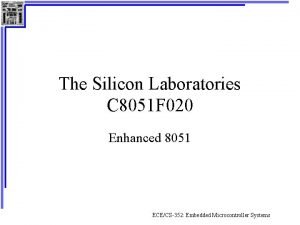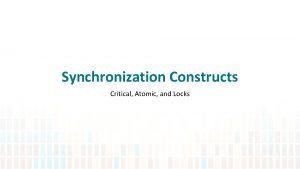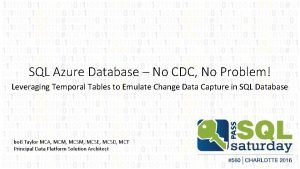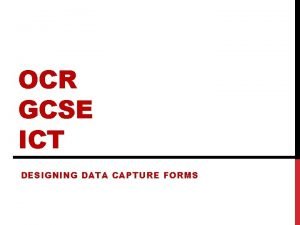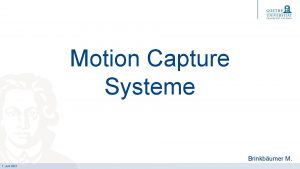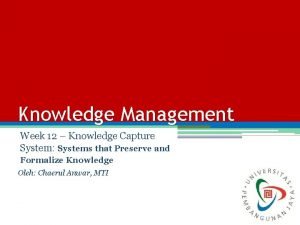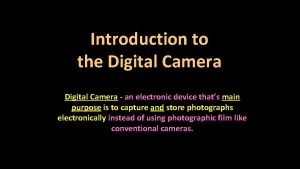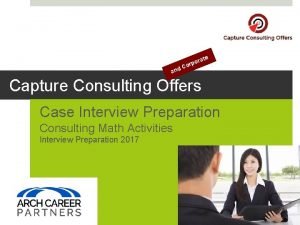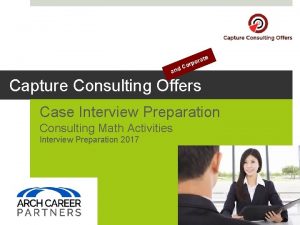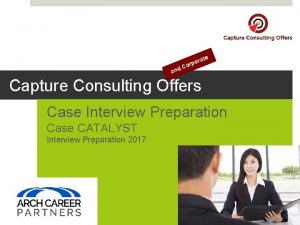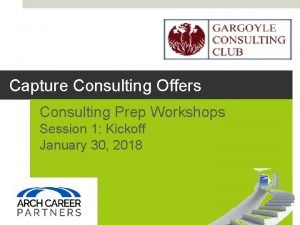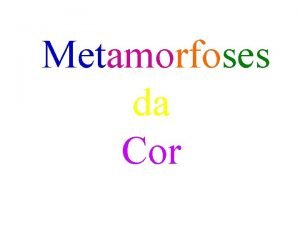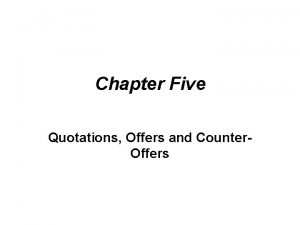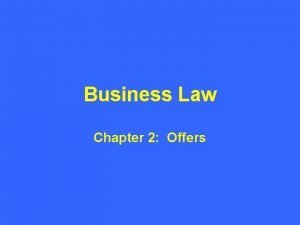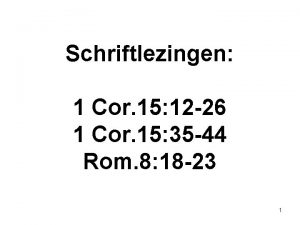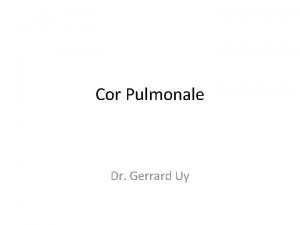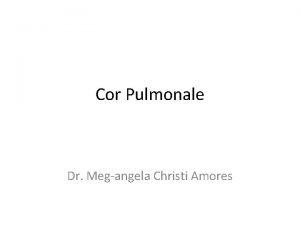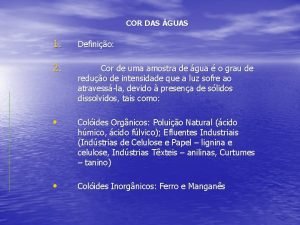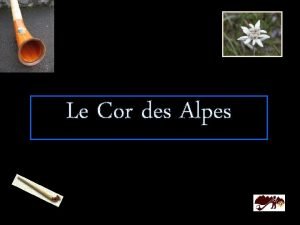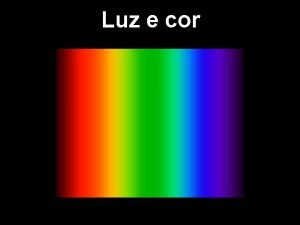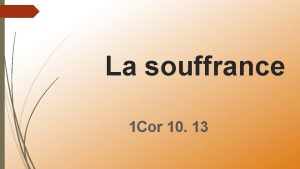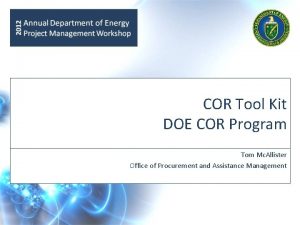rate and po Cor Capture Consulting Offers Case

















































































- Slides: 81

rate and po Cor Capture Consulting Offers Case Interview Preparation Case CORE 1

Case CORE Topics # Topic / Activity ① Introduction / Getting Started: • What firms assess • How the interview flows ② Case Solving Approach ③ Drill Down: Case Start - Situation/Questions/Hypothesis ④ Drill Down: Solving ⑤ Drill Down: Conclusion ⑥ Case Solving in Action: Case Demo ⑦ Wrap-up Appendix: Case solving frameworks 2

CCO Case Workshop 1 Getting Started 3

Case Interview Flow (typically) Interviewer Greeting • Welcome • To Room Introduction Outcome: Within 24 -48 hrs • Chit Chat • Logistics • Resume • Consulting • Firm Non-case Questions (Maybe) Case Background • Given case information • Asked a specific question Work the Case Ask questions of interviewer 45 -60 min interview Wrap-up 4

What is Assessed in a Case Interview? Your problem-solving skills are assessed using a real consulting problem. The firm is trying to determine if you can: a) b) c) Structure a tough and frequently AMBIGOUS problem d) e) f) Create conclusions and recommendation to solve the core problem Determine the high priority issues to focus on Work with facts and data, and determine implications (both qualitatively and quantitatively) Communicate your thinking clearly in a fast-paced setting Role-specific: Apply relevant skills/knowledge! There is no one right answer. The assessment focuses on your approach to solving, not just “cracking the case. ” 5

BIG PICTURE: Case Interview Assessment ① Integration – Overall Case Approach Theory/Speci fic Skills Real-World Knowledge Analytics Pragmatism Creativity ② Reality: Solve as you would at your job/for a client ③ Structure: Remain structured throughout the interview ④ Logic: Provide criteria or rationale for your conclusions ⑤ Communication: State answer first, then explain AND confidence 6

10 Common Case Solving Mistakes Using a recipe (a predefined approach) Not being MECE (comprehensive, exhaustive) Being bottoms up / a data collector Solving math incorrectly (easy math or hard math without recognition) Applying theory too generally Not connecting dots of information throughout the case Making conclusions without basis Standing firm to approach/thinking with new information Not solving the problem asked Sounding as if you are reciting from a case prep book 7

Case Question Examples # CASE EXAMPLES (a few from infinite options!) ① The spice division of a major food manufacturer has had flat or declining sales and profits over the past 5 years. What should the company do to improve its performance? ② Your friend is thinking about taking his business degree and becoming an entrepreneur. In fact, there is a hot dog stand you regularly see in downtown of [a major city], in a busy area, which often has a long line. He thinks he might buy it. How would you evaluate this decision and what would be the maximum price you are willing to pay? ③ You are advising the new Dean of [Name] Graduate School of Business. • • General: What would you highlight as the key issues and challenges, and how would you recommend handling them? What strategies would you recommend to maximize the potential fundraising? 8

CCO Case Workshop 2 Case Solving Approach 9

Case Solving Approach It is not about applying a recipe. It is about putting yourself into solving a client problem and collaborating with a colleague.

CASE SOLVING APPROACH 1 CASE START (aka, STRUCTURE) SOLVE CONCLUDE NOTE 1: The foundation for the Case Solving Approach is based on “The Case Study Handbook: How to Read, Discuss, and Write Persuasively About Cases” by William Ellet, from Harvard Business Press. NOTE 2: The above reference in NOTE 1 also serves as good reading material for overall case preparation fundamentals. 11

CASE SOLVING APPROACH STEP CASE START THINKING 1. Situation 2. Questions 3. Hypothesis 4. Structure SOLVE 1. Evidence 2. Analysis 3. Alternatives/Actions CONCLUDE 1. Conclusions/Recommendations 2. Next Steps 3. Risks, Considerations, Alternatives 12

CASE INTERVIEW Perspective on Priority/Time 45 Minute Interview INTRODUCTION Greeting, process, case background CASE START 1. Situation 2. Questions 3. Hypothesis 5 minutes 10% 3 -5 minutes <10% 25 -30 minutes 50%+ 2 -3 minutes <5% 5 minutes 10% 4. Structure SOLVE 1. Evidence 2. Analysis 3. Alternatives/Actions CONCLUDE 1. Conclusions/Recommendations 2. Next Steps 3. Risks, Considerations, Alternatives WRAP-UP / QUESTIONS Ask interviewer questions, goodbyes 13

FLOW: Working the Case 1 Facts of the case / Question(s) to answer Branch of Analysis High Impact Questions H. I. ? Ideas / “Hypothesis” for potential solutions What is the essence of this case? What are the main drivers influencing this case? Structure (not list of data/information to collect) 4 Branch of analysis • Apply info/bus acumen • Ask ? • Analyze • Synthesize H. I. ? Branch of Analysis • • Hypothesis Structure 3 H. I. ? Branch of Analysis 2 H. I. ? Branch of Analysis H. I. ? 5 Answer Question (s) / Conclusions / Recommendations / Considerations 14

CCO Case Workshop 3 Drill Down: Case Start 15

Case Start The success of a case interview is often determined in the first FIVE (5) minutes of the interview!

CASE SOLVING APPROACH Drill Down CASE START 1. Situation • Bridge gap between no knowledge and knowledge sufficient to form a hypothesis • Understand big picture • Is the case a problem, decision, evaluation, or calculation • Do you have a lot of information or avery little? 2. Questions • Determine what you need to know about the situation • What information can you get to understand the business • Confirm understanding of the focus/specific objectives 3. Hypothesis • What frameworks will inform your solving • What business drivers influence this situation • What criteria/basis are relevant for concluding 4. Structure • What organizing approach is needed • What is the best MECE approach 17

1. Situation FOUR TYPES OF CASE SITUATIONS Use to FOCUS your Hypothesis and Structure 1. Problems These are not mutually exclusive! • Situation where there is an outcome or performance and it is necessary to explain the cause. • The problem can be either a situation with a negative outcome or a potential for success. Ex: Manager is not getting traction for a new sales strategy – Why? Ex: A new marketing campaign had a low response rate – Why? 2. Decisions 3. Evaluations • Many cases need recommendations, but some expect a specific answer to an explicit decision: Yes/No, Where, How • Typically, the case requires option(s), criteria, and evidence to support, and possibly horizons (for recommendations). Ex: Should the company launch a new product – Yes or No? Ex: What should be done to improve market share? • Evaluations provide judgment about worth, value, or effectiveness. • Typically, evaluation requires some type of criteria to serve as a basis of assessment. Ex: Do you agree with the EU’s decision to add new members? Ex: What do you think about the return policy offered by retailer X? 4. Calculations • This is often a specific quantitative analysis. • Key information has been provided or must be estimated (via assumptions). • There is a right way to calculate, based on formulas. Ex: Given a set of variables, what is the one year ROI% for the project? 18

Activity 1: What is the Situation Type? # ① ② ③ CASE EXAMPLES Situation Type The spice division of a major food manufacturer has had flat or declining sales and profits over the past 5 years. Why? Problem ? Should the company acquire the major competitor of the spice division? Evaluation ? Decision Your friend is thinking about taking his business degree and becoming an entrepreneur. In fact, there is a hot dog stand he regularly sees in downtown [City], in a busy area, which often has a long line. He thinks he might buy it. What do you think of his idea? Evaluation What would be the maximum price he should pay for the business? Calculation You are advising the new Dean of [Name] Graduate School of Business. What would you highlight as the key issues and challenges, and how would you recommend handling them? Evaluation Decision ? ? ? 19

Value in Understanding the Case Situation? Must move quickly from Problem to Hypothesis 20

2. Questions Why ask QUESTIONS at the start of the case? To get clarity on the case question (the situation) To get additional information about the client and business To help shape your hypothesis Because you would do so as a consultant in the job To buy a little time at the start of the case! To take control of the case AND make it a conversation What kind of QUESTIONS should be asked at this stage? • • HIGH IMPACT QUESTIONS LOW IMPACT QUESTIONS Clarify the situation Extract additional information Too specific Shows no direction Can you clarify the clients businesses and/or products? Is the client looking for a specific ROI or Payback (for example, >10% or < 1 year) What differentiates the client in industry? To clarify, the client needs to know root causes and actions to change the course • • • How many sales people does the client have? Does the client have any objectives other than increasing profit? Does the client have ideas about what is causing the issue? 21

Examples: High Impact Questions # Question Category Example Question 1 Terminology clarification • • By sales, do you mean revenue or unit volumes? Can you clarify how the delinquency rate is calculated? 2 Business background • Can you say more about the types of spices the client sells – what exactly are the products? You mentioned the spice division, does the client have other divisions as well? Is there a particular reason the company is looking at market X? • • 3 Case question clarification • • 4 Fact-gathering • • You mentioned that sales have stagnated in the spice division, does that mean we are exclusively focused on that division or do I need to evaluate the other divisions as well? We are looking at market entry – I would think our key considerations would be profitability and some metric of time to break even. Are there other criteria that our client might focus on? Do we have the prior growth rates of the division? For how long (quarters, years) have the sales of the spice division been stagnating? 22

Questions at the CASE START that make Interviewers crazy! “Great…let me summarize the case [and you summarize…]. Does the client have any other objectives? ” Sounds like you are reading from one of the “books”. “What criteria should we use to make that decision? ” That is your assignment (in the interview and as a hired consultant). “Can I get revenue and profit information by division and product? ” This is too much information and too detailed for the CASE START. Ask during the CASE SOLVING stage. “Can you explain the helicopter market to me? ” You would not ask this question at a client – ask with more direction/foundation. Asking no questions (or very few) at all! Missed opportunity – not reflective of actual consultant characteristics 23

Activity 2: What questions would you ask? # ① CASE EXAMPLES The spice division of a major food manufacturer has had flat or declining sales and profits over the past 5 years. Why? Questions / Information to Get 1) 2) 3) 4) ② ③ Your friend is thinking about taking his business degree and becoming an entrepreneur. In fact, there is a hot dog stand you regularly see in downtown (of a major city), in a busy area, which often has a long line. He thinks he might buy it. Do you think this is a good idea? You are advising the new Dean of [Name] Graduate School of Business. What would you highlight as the key issues and challenges, and how would you recommend handling them? 1) 2) 3) 4) 24

3. Hypothesis What is a hypothesis in the context of the case interview? It is an EDUCATED GUESS about the answer Must I use a hypothesis? Typically, to get an offer, yes. Why? Cases are short – you need to narrow your focus. How do I shape my hypothesis? The hypothesis should be TOP-DOWN and MECE (stay tuned) Really, what the heck does this mean? ? 25

More About Hypothesis Borrowing from science and research methods: A HYPOTHESIS can be defined as: Tentative A testable statement A prediction of what you expect to find Application of Deductive vs. Inductive Reasoning: DEDUCTIVE Theory INDUCTIVE Information Hypothesis Pattern Observation/Analysis Tentative Hypothesis Confirmation Theory/Conclusion 26

Hypothesis: How to Develop Problem Statement/ Question Start Hypothesis / Ideas Solving Hypothesis 1 Sub-issue 1 MECE Sub-issue 2 Hypothesis 2 Sub-issue 3 27

Hypothesis: Differ Based on the Case Situation HYPOTHESIS ORIENTATION 1. Problems • Declining profits Drivers/root causes of the profit decline • Growing revenue Levers to achieve revenue growth 2. Decisions • Should we…? Criteria for the decision 3. Evaluations • What do you think about…? Criteria to support your point of view • What is your assessment of…? Categories for assessment 4. Calculations • What is the market size of …? Approach to be MECE • What is the price you would pay for…? Approach and rationale for defining the quantitative outcome 28

Hypothesis: MECE MUTUALLY EXCLUSIVE / COMPREHENSIVELY EXHAUSTIVE (MECE) NOT MECE 2 1 1 2 3 4 29

Hypothesis: MECE EXAMPLES Topic Population NOT MECE • • MECE Sports, Arts, Scrapbooking, Reading, Theatre, Cooking Same person may fall in >1 group • • Group by age Same individual not in multiple age groups • Group by watch type: Analog, Digital, Wind-up, Automatic Watches • Group by color: White, black, blue, brown, green, orange, pink, yellow Vacation Decision • • • Beach, City Active, Urban Drive, Fly • • Domestic or International Visited previously or new destination Accessible budget Range of activities of interest Enter a new geography • • Industry analysis Customers Company Competitors • • Market size estimation Profitability Feasibility of implementation Macro and internal challenges 30

Activity 3: What are the hypothesis # CASE EXAMPLES ① The spice division of a major food manufacturer has had flat or declining sales and profits over the past 5 years. Why? ② Your friend is thinking about taking his business degree and becoming an entrepreneur. In fact, there is a hot dog stand you regularly see in downtown (of a major city), in a busy area, which often has a long line. He thinks he might buy it. Do you think this is a good idea? ③ You are advising the new Dean of [Name] Graduate School of Business. What would you highlight as the key issues and challenges, and how would you recommend handling them? Hypothesis • • • Overall market is shrinking New competitor The average price has declined ? There are production issues There are distribution issues There are issues at the retailer • Trends for hot dog eating are strong • The business is profitable • It is feasible for your friend to manage the ? business • There are no challenges in change of business ownership • There are opportunities for growth • • Issue 1: External – Brand reputation Issue 2: Internal – Operations and culture Issue 3: Students – ? Curriculum, jobs Issue 4: Alumni – Education, coaching support 31

Structure (vs. Framework) This is a foundation for the case approach and key for case interview success!

4. Structure -- DEFINITION -struc·ture noun ˈstrək-chər Defintion: The way that something is built, arranged, or organized Structures Internal 1 2 External 3 33

Structure vs. Framework -- DEFINITIONS -struc·ture noun ˈstrək-chər Defintion: The way that something is built, arranged, or organized frame·work noun ˈfrām-ˌwərk Definition: The basic structure of something: a set of ideas or facts that provide support for something 34

Structure vs. Framework: Visual Internal 1 2 External 3 Structures Frameworks 35

Structure vs. Framework: Integration 1 Structure for Approach to Case 2 2 2 Frameworks to Analyze Case 36

Structuring: Organizing Approach MOST COMMON APPROACHES TO STRUCTURE 1 2 3 37

Activity 4: Structure # ① Structure analysis to determine what is causing profits to decline CASE EXAMPLE Hypothesis The spice division of a major food manufacturer has had flat or declining sales and profits over the past 5 years. Why? • • • Overall market is shrinking There is a new competitor The average price has declined There are production issues There are distribution issues There are issues at the retailer PROFIT DECREASE Revenue decrease # units sold decreased • Change to overall industry demand? • New competitor? • Customer mix – retail, wholesale, commercial • Product, distribution, retail issues? • Customer interest? Cost increase Avg price decreased • Change to pricing? • Change to sales mix? Variable costs rising • Change to raw materials costs? • to ? Change suppliers? • Change to purchase quantities? • Change to production quantities? Fixed Costs increased Investment costs incurred • Change to overhead costs? • New investments/ capacity? • Increase in supplier prices? • Special initiatives? • Restructuring? • New business/product s? 38

Discussion / Q&A 39

CCO Case Workshop 4 Drill Down: Solving 40

CASE SOLVING APPROACH Drill Down SOLVE 1. Evidence • What evidence do I have that supports the hypothesis? • What additional evidence do I need? • What comes first / what are the biggest impact areas? 2. Analysis • What analysis is needed – qualitative or quantitative • What data can be used or gathered and applied 3. Conclusion/Hypo • From your analysis, express insights and takeaways. thesis Check • Align back to your original hypothesis and confirm/eliminate • Express “interesting!” or “that is important” 3. Alternatives/Acti ons • Define an outcome from the evidence and analysis • Create an interim action/recommendation for that outcome 41

Drill Down: Case Solving 1 Facts of the case / Question(s) to answer Branch of Analysis High Impact Questions H. I. ? Ideas / “Hypothesis” for potential solutions What is the essence of this case? What are the main drivers influencing this case? Structure (not list of data/information to collect) 4 Branch of analysis • Apply info/bus acumen • Ask ? • Analyze • Synthesize H. I. ? Branch of Analysis • • Hypothesis Structure 3 H. I. ? Branch of Analysis 2 H. I. ? Branch of Analysis H. I. ? 5 Answer Question (s) / Conclusions / Recommendations / Considerations 42

Drill Down: Case Solving What CASE SOLVING is not: Asking tons of questions Gathering more and more information Working heads down Calculating complex math What CASE SOLVING is: Asking questions to get targeted information Linking facts together to create an insight or conclusions Doing analysis to generate insights Driving to prove/disprove hypothesis “Discussing” with your interviewer Focus/prioritize the MOST impactful issues and information 43

Drill Down: Case Solving What CASE MATH is not What CASE MATH is 44

Example: Solving # ① CASE EXAMPLE Hypothesis The spice division of a major food manufacturer has had flat or declining sales and profits over the past 5 years. Why? • • • Overall market is shrinking There is a new competitor The average price has declined There are production issues There are distribution issues There are issues at the retailer PROFIT DECREASE Revenue decrease # units sold decreased • Change to overall industry demand? • New competitor? • Customer mix – retail, wholesale, commercial • Product, distribution, retail issues? • Customer interest? Focus Here Avg price decreased • Change to pricing? • Change to sales mix? Variable costs rising • Change to raw materials costs? • Change to suppliers? • Change to purchase quantities? • Change to production quantities? Pick up from here to Cost increase “solve” one element of Fixed Costs Investment the case costs increased incurred • Change to overhead costs? • New investments/ capacity? • Increase in supplier prices? • Special initiatives? • Restructuring? • New business/product s? 45

Example: Solving - Qualitative u You v Interviewer u I want to know if the client’s customer mix has changed such that a greater % of revenue is coming from lower margin customers than before. If this is the case, this could be a driver of the profitability issues. v Over the past several years, more of the business is coming from wholesale customers. v Today, this contributes to 50% of the client’s revenue and these customers are typically lower margin compared to our retail and commercial customers. u Have we increased our revenue from these customers? v Yes u Has the 50% revenue contribution from wholesale customers come in addition to existing revenue from retail/commercial customers or at the expense of revenue from these customers? v The client has experienced a decline in revenue from those other customers, largely due to dedication of sales resources to focus on this customer segment. u It seems possible then that our client could shift resources to higher margin customers, but, why did the shift of resources to wholesale customers occur in the first place? v It was a new and untapped market and seemed a more efficient sales channel. u Was there an expectation of a drop in margins? v Yes, there was some drop expected, but, not the extent that has actually occurred. 46

Example: Solving - Quantitative u You v Interviewer u I would like to understand why our competitor is gaining market share in the commercial segment (assume you figured this out through your qualitative questions). u I think looking at a pricing comparison might be a good starting point to see if there is a significant difference. Could I get any data we have about our pricing vs. our major competitor? Interviewer provides: v Our commercial cost per case is $2, 125 and our competition is $1, 600. u WOW, that is a major difference! Are the cases the same? v Our cases contain 125, 16 oz bags while our competitor’s cases contain 100, 400 gram bags. u Interesting – the quantities and sizes are different. Maybe that is causing some confusion. I’d like to do a calculation to compare the two apples to apples. 47

Activity 5: Solving – Quantitative Analysis ① Do the analysis (aka: MATH!) ② Draw Conclusion ? The customer may not understand the quantity difference given ounces vs. grams. 48

Drill Down: Case Solving Branch of Analysis 4 Branch of analysis • Apply info/bus acumen • Ask ? • Analyze • Synthesize Branch of Analysis Progress to the end of the case: • Work each BRANCH OF ANALYSIS • Synthesize (conclude) at the end of each branch • Revisit/revise your hypothesis along the way • Move to wrap-up and conclude the case – avoid having the interviewer prompt you (watching time helps!) 5 Answer Question (s) / Conclusions / Recommendations / Considerations 49

CCO Case Workshop 4 Drill Down: Conclusion 50

Conclusion This is the last memory of your case interview with the interviewer. Finish STRONG!

CASE CONCLUSION APPROACH Drill Down CONCLUDE 1. Conclusions and/or Recommendations • State an overall answer for the case based on solving • Provide criteria/basis for answer • Summarize actions/recommendations (in priority) and use ST/MT/LT where appropriate • Ensure actions are pragmatic and tied to STRUCTURE and SOLVING 2. Next Steps • Provide the actions going forward • Be real • Avoid stating what more is needed given the limited information of the case 3. Risks, Considerations, Alternatives • Consider other plausible options the client may want to consider • Offer areas of weakness/uncertainty/risk • Provide approaches/thinking to tackle these risks 52

Recently, students debriefed with a consulting firm to talk about interview outcomes and WHY OFFERS WERE NOT EXTENDED FEEDBACK: The candidates who did not get offers where not as strong in the CONCLUSION. Specifically, the candidate lacked clarity, creativity, and persuasiveness. 53

THIS IS AN EXECUTIVE SUMMARY – AT THE CASE ENDING! Case Conclusion BE SUCCINCT | BE PERSUASIVE | BE ACTION ORIENTED ① Client Question • • Restate the core question asked for the case Be very CRISP ② Answer • • • Provide the conclusions that you identified This is the ANSWER FIRST approach These should answer the question stated above ③ Analysis/Results • • • Provide a summary of the MAIN analysis you performed State what you did and what you found Provide #’s State key insights of analysis Connect to the ANSWER as covered above • ④ Actions (Next steps)/Recommendat • ions Provide specific and relevant next steps IF the case is such that you need to offer recommendations to FIX a problem or PURSUE and opportunity, state these Organize: Categories, time horizons, risk, etc. NO!!: More study, a consulting project ⑤ Risks/Considerations • You don’t know everything State some clear complexities, unknowns, or risks RELEVANT to your case question, solving, and recommendations/next steps • • • 54

Activity 6: Case Conclusion DELIVER MUCH LIKE AN EXECUTIVE SUMMARY (JUST AT THE END!) The client question is how to stem declining sales and profits for its spice ① Client Question business directed at the Food Service Industry. ② Answer The client has 2 core issues driving their sales/profit challenges: 1. Shift of business to the wholesale division with lower margins 2. Price/value confusion with the commercial segment ③ Analysis/Results Based on looking at: the revenue mix between the customer segments and margins, we found that efforts to expand wholesales resulted in lower than expected margins. Additionally, our analysis showed that our commercial price per case is higher than our competition, but, our cases have more bags and overall ounces of spice. ④ Actions (Next steps)/Recommendat ions To address this, there are 4 recommendations, ST and LT: Short-term: 1) Reallocate sales resources to other customer segments 2) Address messaging to clarity product pricing/packaging Long-term: 3) Consider the overall viability of the wholesale business 4) Look at the packaging/pricing of products and the value proposition to commercial customers. ⑤ Risks/Considerations • There are some risks for our client, including what our competition may do. Based on cost structure, they could re-package. • In the wholesale business, we have to work carefully with sales to ensure there is clarity about goals. 55

CCO Case Workshop 6 Case Solving in Action 56

CASE SOLVING APPROACH Demonstration CASE START SOLVE CONCLUDE 57

Case Background: Good Life Trade is a 25 year old company and recognized as the leader in the fair trade coffee industry. The company has experienced tremendous success growing from revenue of $20 M to $35 M over the last 5 years. Net income for the most recent year was $755 K. But, the success of Good Life has come to a screeching halt. For the past 2 years, excluding price increases, revenue has grown at less than the rate of inflation compared to double-digit growth of the last 15 years. This has been compounded by the recent recession and increasing levels of competition. Today, consumers have more choices – in fact, there are more than 300 coffee companies who have embarked on the fair trade coffee business. Good Life Trade and their executive team has become well-known as a leader in Fair Trade practices, hosting conferences and serving as keynote speakers/SMEs Question: What actions would you recommend to Good Life’s executive directors, workerowners, and board of directors concerning the company’s future direction? 58

GOOD Video Demo: Case Start – A Good Example

BETTER Video Demo: Case Start – A BETTER Example

Case Start: Structure Good Life Trade Fair Trade Influences • • • Global economy Country development Social trends Technology trends Environmental trends Legal/Regulator y considerations Internal Operations Strategy • • Competitor strength Growing firms of interest for acquisition New product options New channels, customers, geographies to expand • • • Product sourcing Production Distribution Retail footprint Customer service Marketing effectiveness Financial Strength • • Other considerations Profitability Sources of revenue Pricing Cost structure (variable and fixed) • Shift product mix Change prices Improve cost structure • • Expansion of mission Management execution HYPOTHESIS • Macro-factors are influencing the growth of Fair Trade (+/-) • • Growth strategy – acquire Growth strategy - organic • • Improve area(s) of operations Communicate better/more to customers • • • EVALUATE mission (keep narrow or expand) 61

Solving Video Demo: Case Solving

Solving – Analysis Focus Video Demo: Case Solving – Analysis Focus

Conclusion Video Demo: Case Conclusion

Discussion / Q&A 65

CCO Case Workshop 7 Wrap-Up 66

Wrap-Up: Case Solving Approach “Like a real client problem!” CASE START SOLVE CONCLUDE 67

Structure vs. Framework: Integration 1 Structure for Approach to Case 2 2 2 Frameworks to Analyze Case 68

Case Preparation Overcoming Failure: Case Tips* Clarity • Be clear on case facts and objectives • Ask high level questions about company and products before beginning structure Structure • • Use MECE (“mee-see”) – mutually exclusive and collectively exhaustive Balance structure, flexibility, and creativity ABS – always be structuring Framework(s) – one or combination, not the goal, use to help structure Solving • • Use hypothesis (“answer-first’) approach Work big to small (in terms of impact/significance) Creative can be simple Quick and accurate math calculations Concluding Overall • Practical, actionable recommendations • Strong CEO summary, begin with the answer first • • Take a moment to think before speaking Don’t internalize your thoughts Include qualitative AND quantitative analysis No case (typically) has one single answer or approach * Synthesized from Bain, BCG, LEK and Mc. Kinsey websites, Wet Feet Guides, Tim Darling book, , numerous other case resources! 69

Review: In a Nutshell Make the interview a discussion Show structure and logic Don’t force fit frameworks Display math/computational skills Give both sides to a conclusion – “it might be this, but, we should also consider this…” Display solid business judgment and creativity Communicate persuasively Focus on the main success factors (80/20) – there is a LOT of information out there to distract you! 70

Wrap-Up! Practice like you mean it! Practice – Solo and Partner Practice out loud Excel as a partner: deliver strong cases and count that as practice Ensure you are getting critical and tough feedback HAVE FUN!!! 71

Wrap-Up “Practice isn't the thing you do once you're good. It's the thing you do that makes you good. ” ― Malcolm Gladwell, Outliers: The Story of Success Next step: the Pam Schilling CCO Case CATALYST 72

Capture Consulting Offers Presented by: Pam Schilling www. archcareerpartners. com

CCO Case Workshop Case Frameworks 74

Case Frameworks MOST COMMON FRAMEWORKS TO REFERENCE 1 Organizing Topics Business Assessment Customer segments, key needs of each segment, price points/price elasticity of each segment, distribution channel preferences, concentration/power of customers, current year vs. historical trends, by segment revenue, pricing, etc. Product, benefits, commodity/differentiated, complimentary goods, substitutes, product lifecycle/stage, packaging Company Capabilities, expertise, brand/brand loyalty, distribution channels, cost structure (fixed vs. variable), financial position, organization structure, people Competition Structure (many/few), market share, behaviors, advantages/best practices, entry barriers, supplier strength, industry profitability, industry growth Macro PESTLE Political factors (laws, regulations), global economic factors (exchange rates, taxation, non-domestic market economies), socio-cultural factors (behaviors, demographics, trends, lifestyles, education, values), technology (consumer tech/biotech/agriculture), environment (laws/regulation, disaster, weather/climate), legal factors (trade regulation, licensing, employment) Apply to Case ? ’s • • • Theory Reference Porter’s Five Forces, PESTLE Analysis Market entry considerations Product introduction considerations New business considerations • • • Growth the business Assess the company Market share loss 75

Case Frameworks MOST COMMON FRAMEWORKS TO REFERENCE 2 Organizing Topics Business Growth Strategies (How to grow) Market Penetration Current Products/Current Customers • Move occasional/incidental clients to regular, regular to heavy • Use volume discounts, bonus cards and CRM Market Development Current Products/New Markets • Take market share (lure customer from competitors), existing products in new/foreign markets, new brand names in a market Product Development New Products/Current Markets • Sell other products to regular clients • Accessories, add-ons, completely new products • Use existing distribution and communication channels Diversification New Products/New Markets (MOST RISKY) • Horizontal diversification (new product/current market) • Vertical diversification (add supplier’s or customer’s business) • Concentric diversification (new product closely related to current product in new market) • Conglomerate diversification (new product in new market) Apply to Case ? ’s • • Theory Reference Ansoff Product/Market Grid Grow the business Introduce new products • Fix business in decline 76

Case Frameworks MOST COMMON FRAMEWORKS TO REFERENCE 3 Organizing Topics Profitability Assessment Revenue Price (Rev/unit): Look at segments and pricing, revenue sources, brand, quality Units: Evaluate demand, market share, use Business Growth Strategies May need to use 4 C’s to identify root cause of issues after identified Cost VC (Cost/unit): Key costs driven by # units produced or sold Consider profit margin/contribution margin (by product/segment) FC: Main cost categories (of significance) By value chain activity: Raw materials > Manufacturing > Distribution > Customers FOCUS What is causing the MAJORITY of the PROBLEM/NEED and HOW to FIX/GET it • Isolate DRIVERS causing the profitability problem • Identify RESOLUTIONS to solve the problem • Get DATA and segment information: by product/product line, distribution channel, region, customer group/type, industry group, value chain • Compare DATA by looking at trends and competitors – industry vs. company Apply to Case ? ’s • • Theory Reference Profit Equation, 4 C’s, Value Chain, Microeconomics Profit increase Profit improvement 77

Case Frameworks MOST COMMON FRAMEWORKS TO REFERENCE 4 Organizing Topics Capacity/Acquisition Assessment Demand Overall market growth, firm market share growth, total demand by segment, industry trends – Determine where demand is heading Supply Industry supply by segment, impact on prices, impact of technology innovation on capacity expansion, increases in productivity – Determine impact on supply and overall marginal cost Financial Assessment Alternatives Focus Cost of capacity expansion, profitability, opportunity costs, payback, break-even Lease, sub-contract, outsource Create supply-demand curve, identify market clearing price, this drive the profitability assessment and the yes/no decision Apply to Case ? ’s • • Theory Reference M&A Fit Assessment, Micro-economics (Supply/Demand), Finance (NPV, Payback, ROI) Should you merge/acquire a direct competitor Should you add capacity 78

Case Frameworks MOST COMMON FRAMEWORKS TO REFERENCE 5 M&A Fit Assessment Organizing Topics Customers Products Company Competitor Company A Company B Company A+B • Accumulate synergies – each one increases vote for FIT. • Look for brand, sales force, financial resources, patents, expertise, access to markets, technology, physical assets, overlapping cost structures. Feasibility, Upside, Risks • Deal cost, regulatory approval, price, shareholder approval, poison pills/takeover defenses, market reaction • Economies of scale/scope, market power • Unrealized synergies, lost focus Apply to Case ? ’s • • Theory Reference M&A, Horizontal and Vertical Integration, Business Assessment Fit of 2 companies for a merger/acquisition NOTE: Not for 2 identical companies (use Capacity Acquisition Assessment 79

Case Frameworks MOST COMMON FRAMEWORKS TO REFERENCE 6 Organizing Topics Organizational Assessment Hard Soft Changes, Risks • Strategy; plan to achieve competitive advantage • Structure: reporting structure , org chart • Systems: activities and procedures • • Skills: skills and competencies of employees Style: style of leadership Staff: employees, capabilities, loyalty, tenure Shared Values: core values of the company, corporate culture, work ethic (central, unifying element) • Assessment • Actions Apply to Case ? ’s • • • Theory Reference Mc. Kinsey 7 -S Framework Performance improvement Change assessment Leadership change • • Post-merger integration Strategy implementation 80

Case Frameworks: Combining INTEGRATE MULTIPLE FRAMEWORKS 7 Organizing Topics Market or Product Entry Decision Market Attractiveness • Market size • Growth rate • Customer segments Product • Value of product/what does it do • Value to customers • How the product is differentiated (to customers) Competition • Who are they and characteristics • How do they compete • What are the barriers to entry Financial Opp • Profitability • Synergies • Breakeven point • Source of capital for the investment Method of Entry • Organically (Build it) • Acquire • JV/Partnership • License/Franchise Apply to Case ? ’s • • Theory Reference Business Assessment, Business Growth Strategy, Profitability Assessment Should we enter the market How to enter the market • • Should we launch a product How to launch a new product 81
 Punctuation formulas
Punctuation formulas Best case worst case average case
Best case worst case average case Duke consulting case book
Duke consulting case book Well done project
Well done project Universal library offers
Universal library offers Reported speech questions and imperatives
Reported speech questions and imperatives The type of menu that offers the same dishes everyday
The type of menu that offers the same dishes everyday How an organization offers unique customer value
How an organization offers unique customer value Assortment and variety
Assortment and variety Amadeus offers
Amadeus offers All things considered being a senior offers a student
All things considered being a senior offers a student How is the hole used in hey come on out
How is the hole used in hey come on out Why does montresor feel sick at the end of the story
Why does montresor feel sick at the end of the story A firm that offers outsourcing solutions is called a
A firm that offers outsourcing solutions is called a A person usually offers the most resistance to electricity
A person usually offers the most resistance to electricity Xmpp book
Xmpp book Wtp pathfinder
Wtp pathfinder I stand all amazed at the love jesus offers me
I stand all amazed at the love jesus offers me Absa home loan payment holiday
Absa home loan payment holiday Uac atar cut offs 2021
Uac atar cut offs 2021 Combining random variables
Combining random variables Nominal v. real interest rates
Nominal v. real interest rates Plant growth analysis
Plant growth analysis Spot forward rate formula
Spot forward rate formula Spot rate and forward rate
Spot rate and forward rate Difference between rate and unit rate
Difference between rate and unit rate Difference between short case and long case
Difference between short case and long case Binary search time complexity average case
Binary search time complexity average case Bubble sort algorithm pseudocode
Bubble sort algorithm pseudocode Bubble sort best case and worst case
Bubble sort best case and worst case Bubble sort best case and worst case
Bubble sort best case and worst case Ambiguous triangle
Ambiguous triangle Cap rate interest rate relationship
Cap rate interest rate relationship Contoh soal spot rate dan forward rate
Contoh soal spot rate dan forward rate Addison currency exchange
Addison currency exchange Quiz 2: animal-like protists
Quiz 2: animal-like protists Automatic data capture methods
Automatic data capture methods Business model create deliver capture value
Business model create deliver capture value Capture create and share
Capture create and share Creating value and capturing value
Creating value and capturing value Cor and loe
Cor and loe Rumus cure rate tb paru
Rumus cure rate tb paru For a safe design a friction clutch is designed assuming
For a safe design a friction clutch is designed assuming Rumus csdr
Rumus csdr Glennan building cwru
Glennan building cwru Project failure case study
Project failure case study Hybrid capture
Hybrid capture Structured data capture
Structured data capture Repl capture/apply: memory
Repl capture/apply: memory Ventricular escape rhythm
Ventricular escape rhythm Contoh value creation
Contoh value creation Failure to pace
Failure to pace Capture 2 proposal
Capture 2 proposal Cad capture
Cad capture Calculating half life
Calculating half life Spread capture
Spread capture Tegrity lecture capture
Tegrity lecture capture La progression dramatique antigone
La progression dramatique antigone Internal capture
Internal capture Midori kitagawa
Midori kitagawa River capture definition geography
River capture definition geography Feynman diagram electron capture
Feynman diagram electron capture Exploring the water cycle capture sheet answers
Exploring the water cycle capture sheet answers Grid view medidata
Grid view medidata Data capture methods
Data capture methods Critter capture
Critter capture Knowledge capture systems
Knowledge capture systems Sp_replcmds
Sp_replcmds Brainware for invoices
Brainware for invoices Internal capture
Internal capture Automatic data capture
Automatic data capture Exploring the water cycle capture sheet answers
Exploring the water cycle capture sheet answers Capture mode in pic microcontroller
Capture mode in pic microcontroller Omp atomic capture
Omp atomic capture Capture beat
Capture beat Cdc in azure sql
Cdc in azure sql Ventricular flutter
Ventricular flutter Text data capture forms
Text data capture forms Performance capture verfahren
Performance capture verfahren Knowledge capture system
Knowledge capture system A digital camera is an electronic device used to capture
A digital camera is an electronic device used to capture Motion capture history
Motion capture history
